|
 |
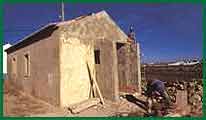
We used two different kinds of mortar, lime
mortar for the old fashioned stone pitching with filled joints walls, and
cement mortar for the new masonry in hollow briks and concrete.
|
 |
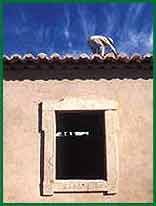 |
 |
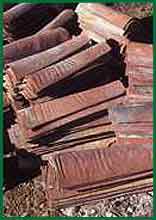 |
Then comes the
phase of removal of the shattered and ruined mortar up to the wall, so as
to examine the existing structure and it state of deterioration. All the
caving in and imperfections detected were repaired but always with the same
construction rules. It is important to mention that at that time a 40 cm
caving in was detected in the south walll, that was caused by the weight
of the covering, the so-called covering fluxion. The wall had to be partially
removed, so as to be reconstructed, following the same construction process
and in the corrected position.
|
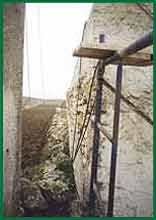
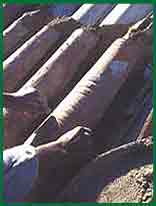 |

We used two different kinds of mortar, lime
mortar for the old fashioned stone pitching with filled joints walls, and
cement mortar for the new masonry in hollow briks and concrete.
|
 |
In
the processe of rehabilitation we must always respect the former construction
process, otherwise risking serious and unexpected pathologies.
In the work of relaying
the removed roof tiles, while doing the new roof, we used the fibrecement
foil, as a base for the earthen tile and subtile, against infiltrations
and as part of the thermal insulation. The masonry used in the new window
recessings, are masonry recovered from a demolition and used here. Always
having in mind that: "Nothing is consumed, everything is transformed." |

(C)2002 Paulo Jones Lda

|
"Casas de Portugal" Magazine - Photographer Nuno Martinho
|
|


